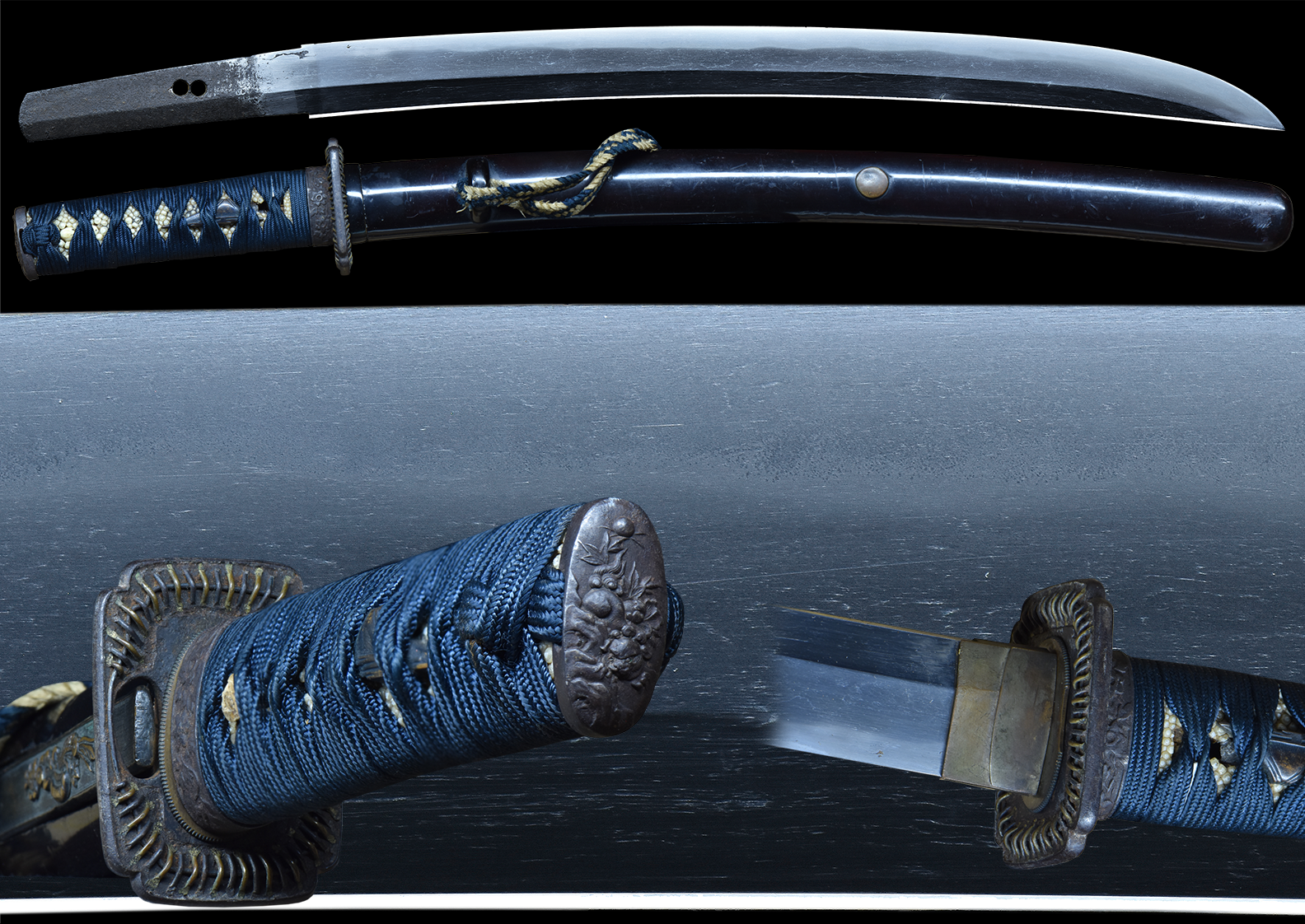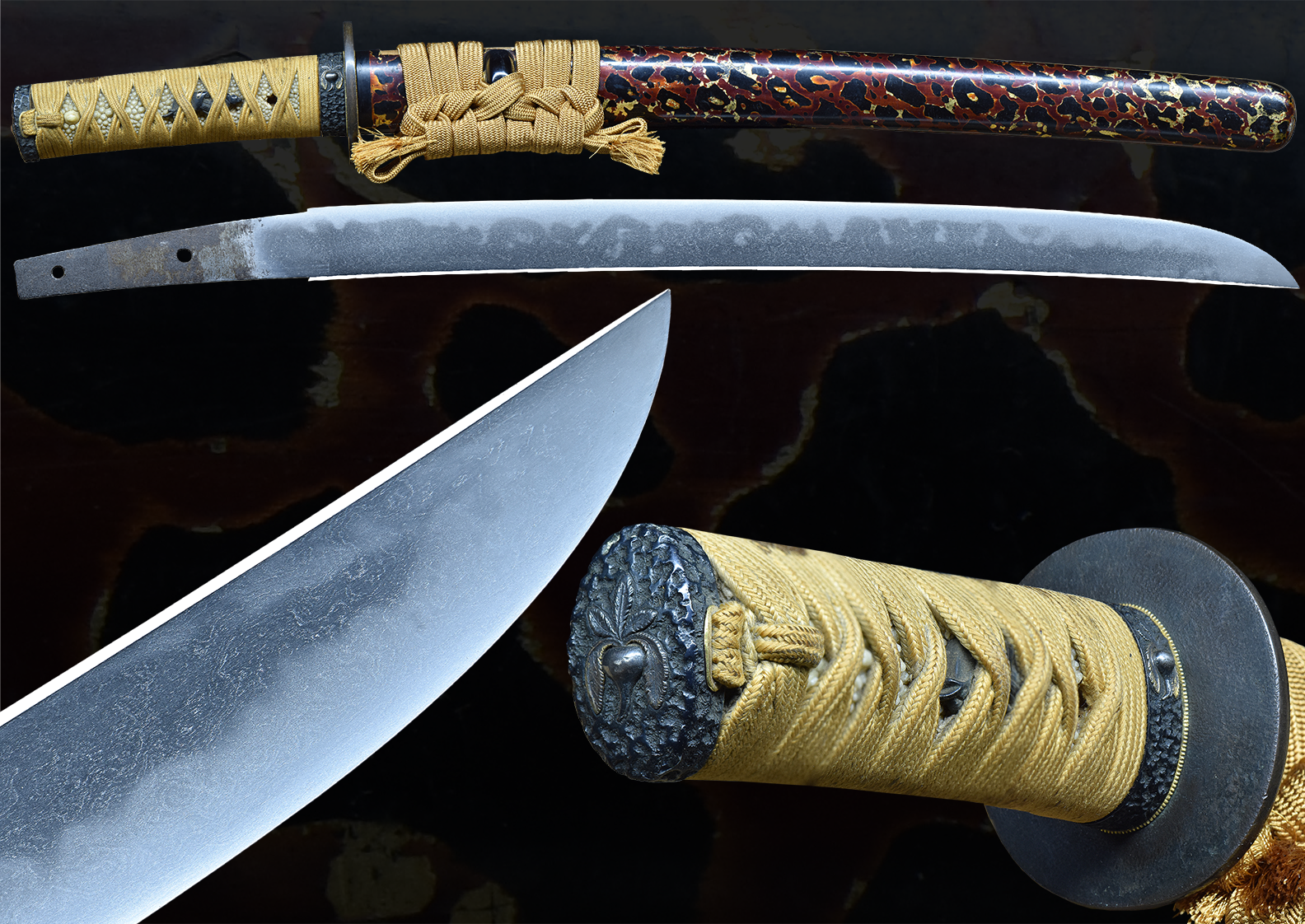This is a very outstanding example of a Matchlock that is rare. Matchlocks can be found regularly but they were mostly the light weight versions that were carried in battle. This particular Matchlock is very heavy and was designed to be what is called a wall gun. It’s more like a small cannon. The bore size is about 19mm, meant for a much larger projectile. It’s difficult to say when it was made exactly but it appears to be from the 1600s to the early 1700s. These matchlocks were generally employed to protect castles. They were rested on small window opening that looked out of the walls. They could rest on the wall opening and had strong thick heavy barrels to fire larger ammunition.
This particular matchlock has a family crest in silver inlayed on the top along with a highly carved dragon with gold accents. It’s signed by its maker “Kunitomo Sadakichi Hisayoshi”. On the bottom of the barrel the signature is difficult to read but it looks like “Gin hitoe maki hari”. Followed by in larger kanji “Nihonmatsu-ju Kunitomo Sadakichi Hisayoshi Saku”. This is the maker of this matchlock “Kunitomo Sadakichi Hisayoshi”. Its is also signed inside the wood stock and reads “Kazusa no kuni Kano omi no kami san Oshu Nihon matsu ju”. This inscription is most likely the owner at the time and not the original person it was made for. The inscription indicates that the owner was from Kazusa no kuni (present day Chiba prefecture near Tokyo). He was the head (daimyo) of the Kano clan of feudal lords, whose domain was in Ichinomiya. His name was Kano Hisanari (1751-1811), the third generation head of his clan.
As described this is a very unique matchlock with a many fine details and a wonderful history not only of the maker but also of a known Daimyo Kano Hisanori. It is rare to see these matchlocks come up for sale. Below you can find a little more history on matchlocks.
The introduction of matchlock
It is said that the Hinawa-Ju (火縄銃, matchlock) was introduced in Japan in 1543. A foreign merchant ship drifted ashore in Tanegashima (種子島), located in Kagoshima prefecture, and two Portuguese merchants on board carried two matchlocks. Tanegashima Tokitaka (種子島 時尭, 1528-1579), who was the lord of Tanegashima at that time, treated them with respect and bought these matchlock guns at a high price. One of the matchlock guns he had purchased was lent to a swordsmith in Tanegashima and ordered to be duplicated. It is said that matchlock guns spread throughout Japan through this process.
Appearance of matchlocks on battlefields
This is how matchlock guns were brought to Japan. And this weapon was first brought into actual combat in Japan at the Battle of Kurokawasaki in 1549 in Satsuma (薩摩, today’s Kagoshima prefecture). However, guns did not become the main weapon immediately after their introduction. To tell the truth, weapons such as spears, bows, and arrows were still the primary weapons at that time, and it is said that guns played an auxiliary role in intimidating the enemy’s horses with the sound of firing. According to historical facts, matchlock guns were used as the primary weapon at the Battle of Nagashino in 1575.This matchlock has a relatively simple appearance. Its barrel is thicker than Kodutsu (小筒), the most common slender matchlock. This type of matchlock is called the Nakazutsu (中筒). According to a theory, it was challenging to handle Nakazutsu on the battlefields because the impact was strong when fired compared to Kozutsu. Due to their high price, Nakazutsu were not distributed in large numbers to temporary soldiers but were used by trained soldiers who continued to serve their masters.
- Mei: “Gin hitoe maki hari”. Followed by in larger kanji “Nihonmatsu-ju Kunitomo Sadakichi Hisayoshi Saku”.
- Date: Edo (1600’s- early1700’s)
- Nagasa: Overall length is 38 1/2 inches
- Bore size: 19.0 mm
- Condition: Excelent
Price on request
(shipping and insurance included)
Email us if your interested in this item and remember to include the order number for this item: fss-949.
For Sale
























